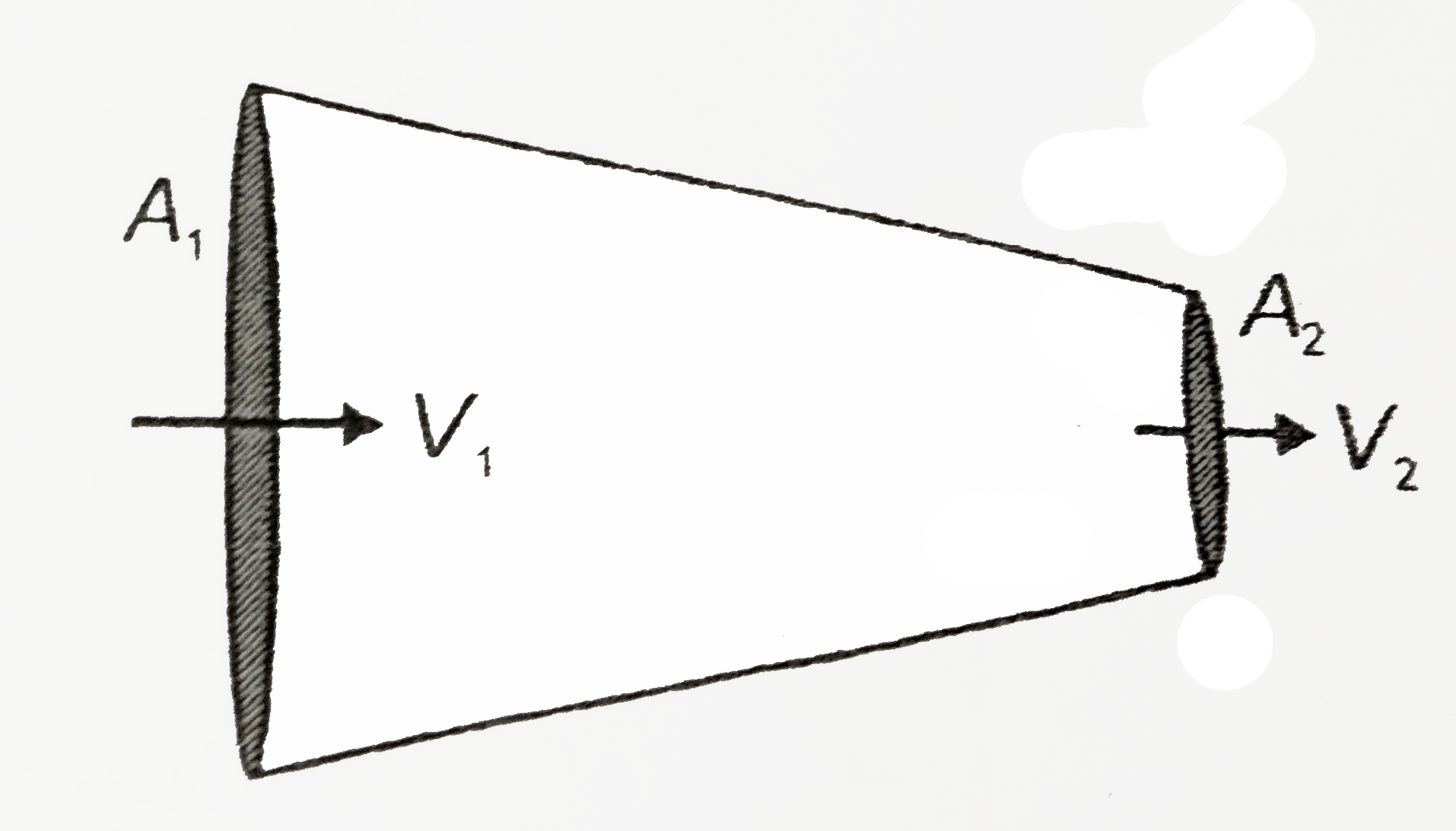The velocity of liquid (v) in steady flow at a location through cylindrical pipe is given by v=v0(1−r2R2), where r is the radial distance of that location from the axis of the pipe and R is the inner radius of pipe. If R = 10 cm. volume rate of flow through the pipe is π/2×10−2m3s−1 and the coefficient of viscosity of the liquid is 0.75 N sm−2, find the magnitude of the viscous force per unit area, in Nm−2 at r = 4 cm.
Magnitude of viscous force, F=ηAdvdt
⇒v=v0(1−r2R2)⇒dvdt=−2V0rR2⇒σ=η.2v0rR2....(i)
Volume rate of flow, Q
consider an annular element at r from axis, width dr.
dA=2πrdr,dQ=v.dA=v0(1−r2R2)2πrdr
Q=∫dQ=2πv0[r22−r44R2]R0=π2R2V0⇒v0=2QπR2
∴(i)⇒σ=η4QπR4r,R=0.1m
At r=0.04 m ,σ=(0.75)4×π2×10−2×0.04π×10−4=6Nm−2
Topper's Solved these Questions
Similar Questions
The inner radius of a pipe is 2.1 cm. How much water can 12 m of this pipe hold ?
View SolutionIf the end correction of an open pipe is 0.8 cm, then the inner radius of that pipe will be
View SolutionWater from a pipe is coming at a rate of 100 litres per minute. If the radius of the pipe is 5cm, the Reynolds number for the flow is of the order of : (density of water =1000kg/m3, coefficient of viscosity of water =1mPas)
View SolutionAn air bubble of 1cm radius is rising at a steady rate of 0.5cms−1 through a liquid of density 0.81gcm−3. Calculate the coefficient of viscosity of the liquid. Neglect the density of air. ( Take g=10m/s2)
View SolutionA current is flowing through a cylinderical conductor of radius R, such that current density at any cross-section is given by J=J0(1−rR), where r is radial distance from axis of the cylinder .Calculate the total current through the cross-section of the conductor.
View SolutionA device used for measuring the rate of flow of liquid through pipes is called………..
View SolutionCalculate the rate of flow of glycerine of density 1.20 ×103kg/m3 through the conical section of a pipe. If the radii of its ends are 0.1 m and 0.02 m and the pressure drop across the length is 10 Nm2.
 View Solution
View SolutionThe cross-sectionss of a pipe at two points A and B are in the ratio 1.4. If the speed of water flowing through the pipe at point A is v, its speed at point B is
View SolutionCalculate the rate of flow of glycerine of density 1.25×103kgm−3 through the conical section of a pipe, if the radii of its ends are0.1 m and 0.04 m and the pressure drop across its length is 10Nm−2.
View SolutionThe volume of a liquid (V) flowing per second through a cylindrical tube depends upon the pressure gradient (p/l) radius of the tube (r) coefficient of viscosity (η) of the liquid by dimensional method the correct formula is
View Solution

